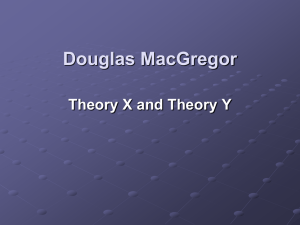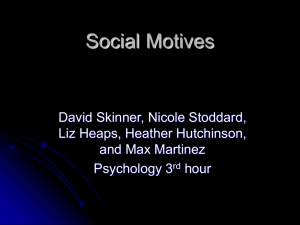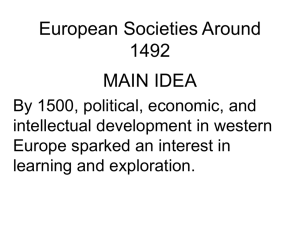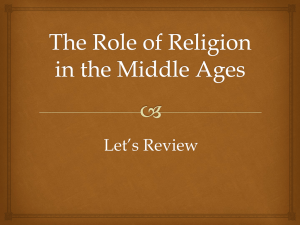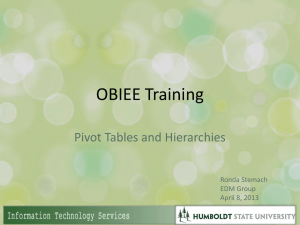Conclusion
advertisement
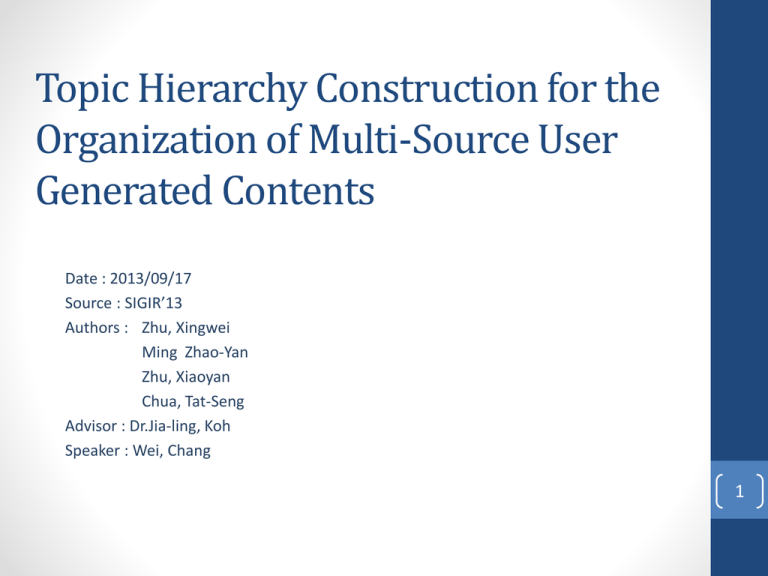
Topic Hierarchy Construction for the
Organization of Multi-Source User
Generated Contents
Date : 2013/09/17
Source : SIGIR’13
Authors : Zhu, Xingwei
Ming Zhao-Yan
Zhu, Xiaoyan
Chua, Tat-Seng
Advisor : Dr.Jia-ling, Koh
Speaker : Wei, Chang
1
Outline
• Introduction
• Approach
• Experiment
• Conclusion
2
IPhone 5s? IPhone 5c?
3
Multi-Source User Generated
Contents
4
Problem Formulation
• Goal : Given a root topic C and its information
source set Sc, we aim to build and continuously
update a topic hierarchy H for C in order to organize
the information in Sc according to their relevant topics.
• In this paper, Sc={Blogger, Twitter, community QA site(cQA)}
5
Outline
• Introduction
• Approach
•
•
•
•
•
Framework
Topic Term Identification
Topic Relation Identification
Topic Hierarchy Generation
Topic Hierarchy Update
• Experiment
• Conclusion
6
Framwork
7
Topic Term Identification
User
Generated
Contents
Heuristic
Rules
Potential
Grounding
Topics
Grounding
Topic Set
TF-IDF
External
Sources
Final
Candidate
Topic Set
8
Heuristic Rules
9
Grounding Topic Set
TFIDF
IPhone
Blog 1
IPhone
Apple Inc.
QA 1
T-Mobile
Apple Inc.
QA 2
IOS
Apple Inc.
Apple Inc.
T-Mobile
Smartphone
Apple
IOS
IPhone
64-bit
Tweet 1
IOS
Tweet 2
IPhone
Price
IOS
10
Grounding Topic Set
• Blogs
• Use the content and title
• Double weights of terms in titles
• Use the top 5 terms
• cQAs :
• Use the question title, description and the best
answers
• Use the top 5 terms
• Tweets :
• Use the content
• Use the top 1 terms
11
Topic Set Extension
• What we already have :
• Grounding topic set 𝑇𝐺 = {𝑡𝑔1 , 𝑡𝑔2 , … }
• What it lacks :
• Middle level topic
• How to get middle level topics :
• Search Engine : 2 patterns
• * such as <slot>
• <slot> of *
• WordNet : direct hypernym
• Wikipedia : category tags
• Final candidate topic set : 𝑇 = {𝐶} ∪ 𝑇𝐺 ∪ 𝑇𝐺
12
Outline
• Introduction
• Approach
•
•
•
•
•
Framework
Topic Term Identification
Topic Relation Identification
Topic Hierarchy Generation
Topic Hierarchy Update
• Experiment
• Conclusion
13
Topic Relation Identification
Apple Inc.
𝑒(𝑟(𝑡𝐴 , 𝑡𝐵 ))
𝑒(𝑟(𝑡𝐵 , 𝑡𝐴 ))
𝑒(𝑟(𝑡𝐴 , 𝑡𝐶 ))
𝑒(𝑟(𝑡𝐶 , 𝑡𝐴 ))
𝑒(𝑟(𝑡𝐶 , 𝑡𝐵 ))
IPhone
IPhone 5s
𝑒(𝑟(𝑡𝐵 , 𝑡𝐶 ))
Denote 𝑟 𝑡𝐴 , 𝑡𝐵 as a sub-topic relation, which means 𝑡𝐵 is a sub-topic of 𝑡𝐴
14
Topic Relation Identification
15
Evidences from the
Information Source Set
• 𝑒𝑑𝑖𝑠𝑡𝑟𝑑𝑜𝑐 (𝑡𝐴 , 𝑡𝐵 ), 𝑒𝑑𝑖𝑠𝑡𝑟𝑠𝑒𝑛 (𝑡𝐴 , 𝑡𝐵 ) : the cosine similarity
between the corresponding contexts of them
• V=(smart phone, price, buy, iOS, Android)
• 𝑡𝐴 = 𝐴𝑝𝑝𝑙𝑒 𝐼𝑛𝑐
• 𝑡𝐵 = 𝑇 − 𝑀𝑜𝑏𝑖𝑙𝑒
• 𝑣𝑡𝐴 = (3, 5, 10, 2, 3)
• 𝑣𝑡𝐵 = (2, 4, 11, 1, 3)
• 𝑒𝑑𝑖𝑠𝑡𝑟𝑑𝑜𝑐 𝑡𝐴 , 𝑡𝐵 =
<𝑣𝑡𝐴 ,𝑣𝑡𝐵 >
𝑣𝑡𝐴
𝑣𝑡𝐵
16
Evidences from Wikipedia
Pointwise Mutual Information (PMI)
17
Evidences from WordNet
18
Evidences from Search Engine
Results
• Pattern-based evidences
• Query = “tA such as tB and” root topic
• 𝑒𝑠𝑝𝑎𝑡𝑡𝑒𝑟𝑛𝑖 (𝑡𝐴 , 𝑡𝐵 ) = 1 if the search engine returns more than ζ
results that contain this query; otherwise it is set to 0.
19
Combine Evidences
20
Outline
• Introduction
• Approach
•
•
•
•
•
Framework
Topic Term Identification
Topic Relation Identification
Topic Hierarchy Generation
Topic Hierarchy Update
• Experiment
• Conclusion
21
Topic Hierarchy Generation
22
Topic Hierarchy Generation
23
Topic Hierarchy Generation
24
Topic Hierarchy Generation
25
Edge Weighting
26
Hierarchy Pruning
• Use the Chu- Liu/Edmond’s optimum branching algorithm
• every non-root node has only one parent and the sum of the
edge weights are maximized
• remove
• (1) the nodes that are not reachable for the root topic and
• (2) the leaf nodes that are not in the grounding topic set.
27
Topic Hierarchy Update
28
Outline
• Introduction
• Approach
•
•
•
•
•
Framework
Topic Term Identification
Topic Relation Identification
Topic Hierarchy Generation
Topic Hierarchy Update
• Experiment
• Conclusion
29
Topic Term Identification
30
Topic Hierarchy Generation
31
Topic Hierarchy Generation
32
Hierarchy Update
33
Outline
• Introduction
• Approach
•
•
•
•
•
Framework
Topic Term Identification
Topic Relation Identification
Topic Hierarchy Generation
Topic Hierarchy Update
• Experiment
• Conclusion
34
Conclusion
• Given a root topic, we used evidences from multiple
UGCs to identify topic terms and sub-topic relations
between them. With these topic terms, a graph-based
algorithm was applied to generate and update the topic
hierarchies, on which the UGCs can be organized
according to their relevant topics.
35

